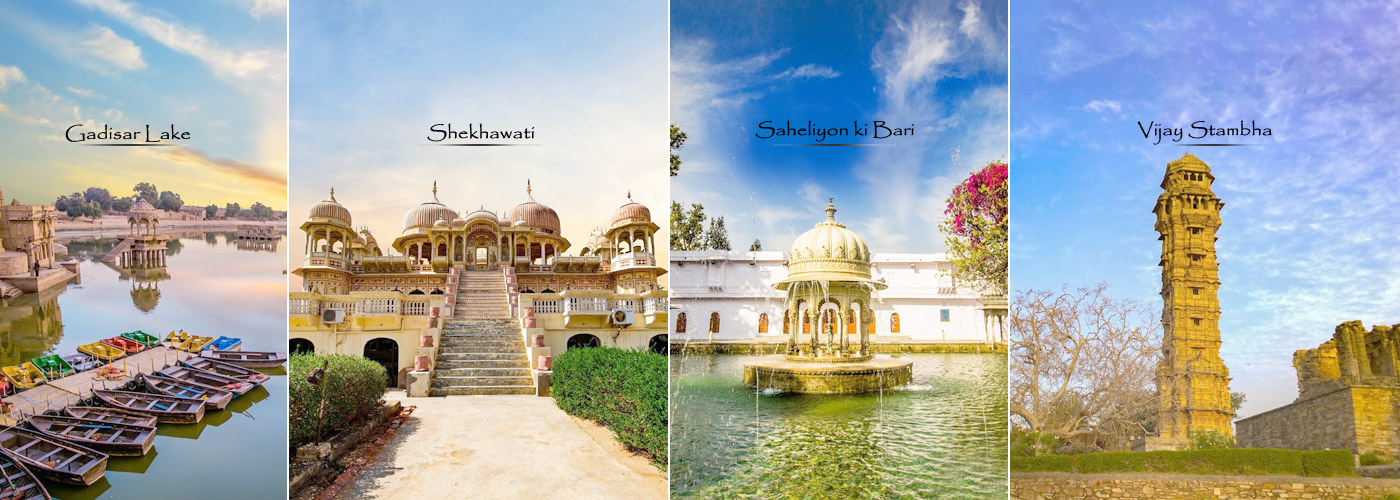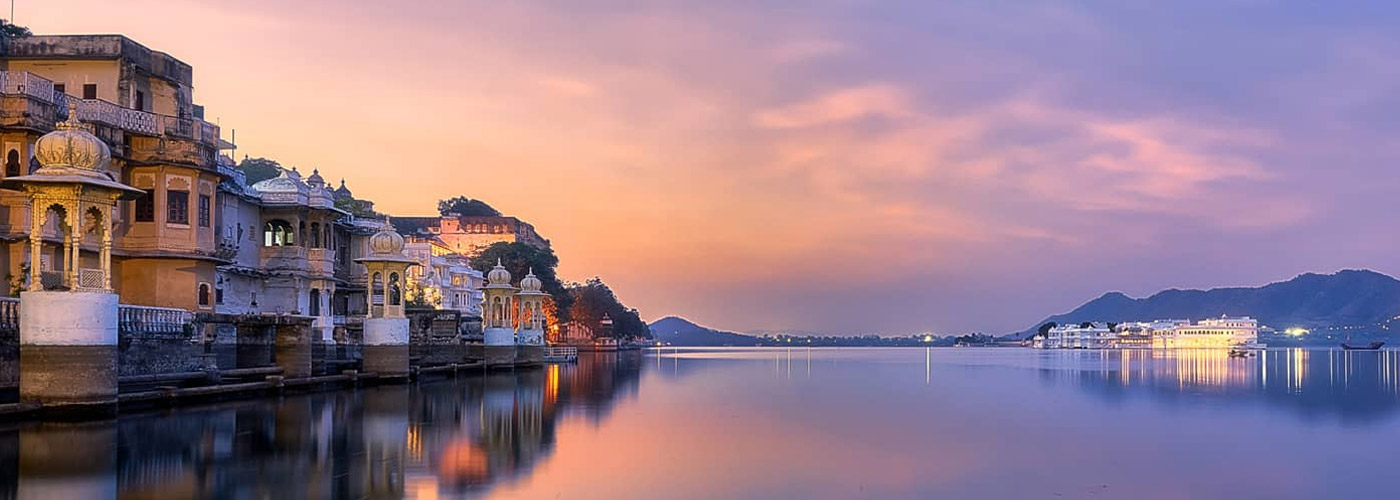B2B Travel Agency in Chittorgarh
B2B Travel Agency in Chittorgarh Named after the massive Chittorgarh Fort, the city of Chittorgarh is a popular tourist destination in Rajasthan. Seated on the bank of Berach River, Chittorgarh is also the district headquarters of the same name and it once served as the capital of the Sisodia Clan of Rajputs of Mewar.
The major attraction of the city is inarguably Chittorgarh Fort, which is considered the largest fort complex in India with a total area of 700 acres. It was first built in the 7th Century AD by the Maurayans and then was later ruled by the Rajputs and Mughals.
In Chittorgarh Fort, the biggest Rajput Festival, Jauhar Mela is held annually on the anniversary of one of the jauhars (self-immolation of the women of Chittorgarh during three invasions in the fort). The festival commemorates the bravery of Rajput ancestors and all three jauhars. The descendants of the princely families hold a procession to celebrate the festival in Chittorgarh. Other than Jauhar Mela, Chittorgarh also celebrates festivals like Maharana Pratap Jayanti, Meera Mahotsav, Teej, Gangaur, Rang Teras – The Tribal Fair.
History
The origin of Chittaurgarh can be traced to the seventh century. Earlier it was known as Chitrakut, after a local Rajput chieftain named Chitrang. It remained the capital of the local Sisodia clan of Rajputs from the eighth to the 16th century.
The history of this town is written in blood and sacrifice. Muslim rulers sacked it three times in the medieval period. The first was by Ala-ud-din Khilji, the Sultan of Delhi in 1303. Khilji laid siege of this hill fort to capture the beautiful Padmini, the queen of Chittaurgarh.
When the situation worsened, Bhim Singh, the ruler of Chittaurgarh, led his men donned with saffron robes of sacrifice, and rode out of the fort to certain death. Inside the fort, women, including Padmini and the children, committed mass suicide or jauhar by immolating themselves on a huge pyre, rather than losing their honor at the hands of the enemy.
In the middle of the 15th century, Chittaurgarh gained eminence when the legendary Rajput ruler, Rana Kumbha, ruled it. He built the Vijay Stambh (Victory Tower) to commemorate his victory over Mahmud Khilji, the ruler of Malwa, in 1440.
Bahadur Shah, the Sultan of Gujarat, sacked Chittaurgarh again in 1535. The jauhar that followed the siege saw the death of 13,000 women and 32,000 Rajput soldiers.
The third and final siege took place in 1568 at the hands of the great Mughal emperor Akbar. Jaimal and Kalla, two Rajput generals, valiantly defended the fort but with their death and deteriorating situation, jauhar was performed. However, Maharana Udai Singh II, the ruler of Chittaurgarh, fled to Udaipur and re-established his rule. The Mughal emperor Jahangir returned Chittaurgarh to its rulers in 1616.
Chittorgarh Fort
Chittorgarh city is known for its huge fortresses in Rajasthan state. There are many big fortresses here, but the fort of Chittorgarh is a fort whose history is the most different and special. It was constructed during the reign of Maurya in the seventh century. It was founded in 734 by Bappa Rawal, ruler of Sisodia dynasty of Mewar. According to historical documents, the fort of Chittorgarh has remained the capital of Mewar for 834 years. Spread over 700 acres, the fort stands on the hill at a height of 180 meters from the ground and especially known as Chittorgarh Fort the capital of Mewar. At first, it was the rule of Guillot and later Sisodiya’s reign.
The fort is the best example of patriotism, courage, medieval heroism and sacrifice of Sisodia and his women and children in Mewar in the 7th and 16th century to the state. At that time, Rajput rulers, soldiers, women and locals used to think that sacrificing the fighting against the forces instead of surrendering the Mughal army. In 2013, in Phnom Penh of Colombia, in the 37th session of the World Heritage Committee, along with Chittorgarh fort, five more Fort of Rajasthan were included in the UNESCO World Heritage site.
Vijay Stambh
Vijay Stambh or Jai Stambh in Chittorgarh is considered a symbol of the victory of Chittaurgarh. It was constructed from 1448 to 1458 by Rana Kumbha in celebrating the victory of Sultan of Malwa against Mahmud Shah Khalji. It is related to Indian culture and architecture. The Vijay pillar stands at 122 feet high and 47 square feet on its base, It has approximately 157 steps up to the 9th floor. A scholar of international fame, while looking at the 9-storey building in Vijay Stambh and said that on each of its bottom, various dimensions of religion and culture have been presented. From the 9th floor, we get a spectacular view of the city of Chittorgarh.
Rana Kumba Palace
Rana Kumba Palace is a historical monument where Rajput King Maharana Kumba spent his royal life. This fort was built in the 15th century and one of India’s finest architectures. It is a symbol of Rajput architecture and very popular among the Chittorgarh tourists.
Maharana Kumbha created architecture at the age of 35, Chittorgarh, Kumbhalgarh, Achchargad is the main source of 32 forts made by them. It is said that underground basement in the Rana Kumbha palace. Rani Padmini and royal women living in the palace used to use the basement. It has some other tourist spot, such as the Archeological Museum, Fateh Prakash Museum, Jaimal and Kalla, Vijay Stambh, Padmini palace and cenotaphs.
Padmini Palace
The three-story building situated in the southern part of Chittorgarh fort was built in the 19th century. Padmini Palace is located in the middle of the water. the place where Alauddin Khalji was allowed to see the image in Mirror of Rani Padmini. Seeing the image of Rani Padmini in the mirror, Allauddin went crazy with her beauty, and with the desire to win it, it was decided to destroy the Chittorgarh. The palace tells the story of courage and pride of Rani Padmini, the palace has a beautiful lotus pond. The architecture is wonderful and illustrated atmosphere attracts and draws tourists towards it.
How to Reach:
By Air - Maharana Pratap Airport, also known as the Dabok Airport, in Udaipur is the nearest airport to reach Chittaurgarh. The airport is located at a distance of 90 km. At the airport; there are taxis and cabs available to move in and around the city.
By Rail - Chittaurgarh Railway Station is well-connected with major cities via an extensive rail network. Local transportation is also available to carry visitors from railway station to in and around attractions of the district.
By Road - One can also reach Chittaurgarh via road. There is proper road connectivity available, thus, frequent bus service also plays crucial role in carrying tourists from nearby cities. Private taxis and cabs are also available for hire. Some of the major distances from Chittaurgarh are Ajmer - 185 km, Jaipur - 304 km, and Indore - 349 km.


